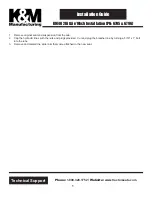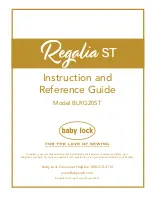
3
TEROS 11/12
Table 1 Installation (continued)
Installation
There are several methods for installing soil moisture sensors (
). Keys to a
good installation and collecting good soil moisture data are described below.
Create Hole
Avoid interferring objects.
• Installations near large metal objects can affect the sensor function and
distort readings.
• Large objects like roots or rocks could potentially bend the needles.
Auger or trench a hole to the desired sensor installation depth and direction
according to the installation method desired.
Insert Sensor
Determine sensor orientation. The TEROS 11/12 sensor may be positioned in
any direction. However, with the body in a vertical position (as shown below),
there is less restriction to water flow. A vertical position will also integrate
more soil depth into the soil moisture measurement. Installing the sensor with
the body in a horizontal position will provide measurements at a more discreet
depth. See Measurement volume of METER volumetric water content sensors
for more information on sensor measurement volume.
Sensor body vertical and needles horizontal
Any metal located between the sensor and the ferrite core can interfere with
VWC measurements and should be avoided.
ATTENTION! Minimize air gaps around the sensor. Air gaps around the sensor needles will
result in low readings of soil moisture.
1. Load the TEROS 11/12 using the Borehole Installation Tool (BIT).
NOTE: The BIT provides a significant amount of mechanical advantage. See
for instruction on installing the TEROS 11/12 without the BIT.
2. Lower the tool into the hole or trench with the back of the tool supported
by the far wall.
3.
Pull the tool lever to activate the jack and insert the sensor into the sidewall.
WARNING: When installing sensors in rocky soils, use care to avoide bending sensor needles.







































